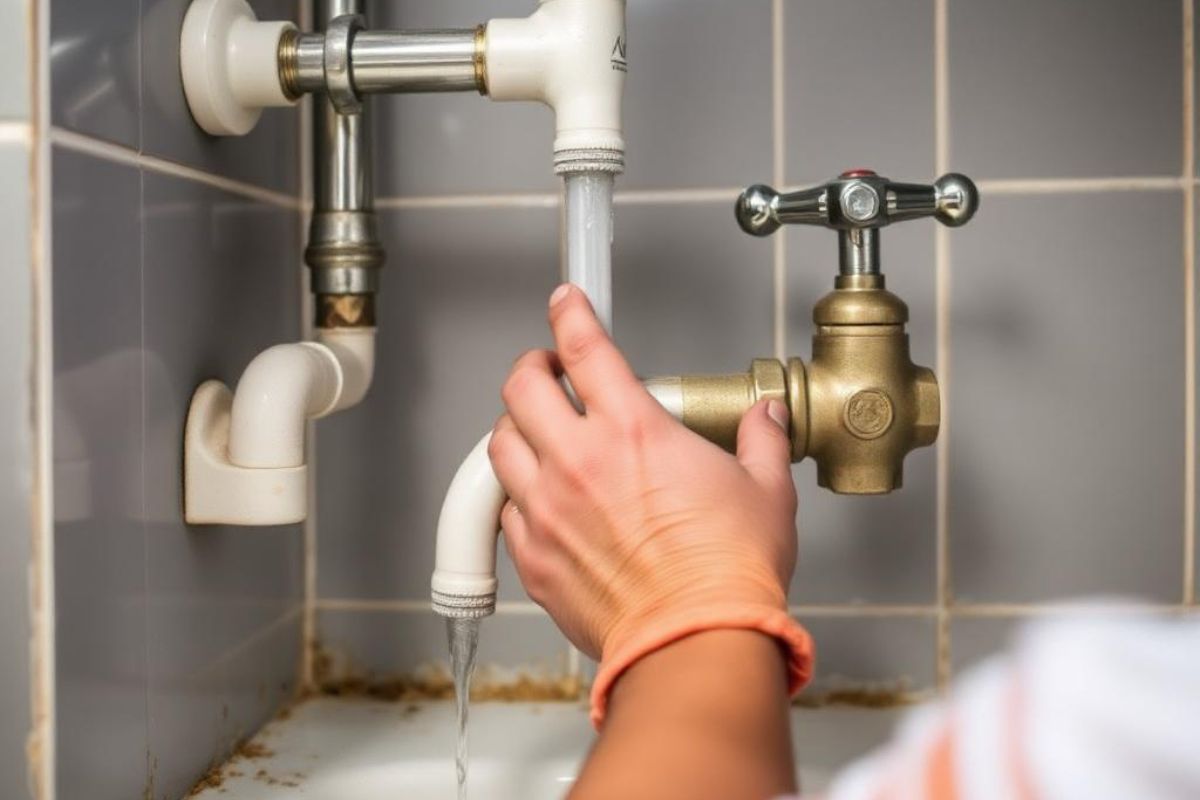The concept of owning a tiny house is appealing to many as it comes with a much smaller environmental footprint, lower bills for utilities as well as high mobility.
But there are challenges, some notable challenges such as plumbing. Plumbing is an important aspect of home design as well as efficiency, and one of the most important of those is the shut-off water valve, which allows you to easily control water flow in your tiny house.
What is Plumbing in a Tiny House?
But while tiny house plumbing incorporates most of the essential components of conventional house plumbing, its design must be modified to allow mobility as well as limited spaces. Depending on your tiny house setup, you may be connected to municipal water, use a tank system, or rely on a combination of both.
Core Parts Making up the Plumbing System of a Tiny House
Water Supply: This could be from a city connection, a well, or water storage tanks.
Pipes: Pipes are used for the transport of water to various units such as sinks, showers, and toilets. Since it is flexible and easy to install, It is not uncommon to see PEX tubing make its way into tiny homes.
Shut-off water valve: The shut-off valve is an essential piece of the plumbing system required for the isolation of particular sections, shutting off the entire water system or isolating particular sections in the course of any emergency. If done well, locating the valve is considered to be the best practice.
Water heater: Water heaters that save space, such as tankless variants, are gaining popularity and have great demand because they provide hot water almost immediately.
Wastewater disposal and main/foul water management systems: As a primary form of waste management, tiny houses are popular for the use of grey water systems and/or RV-style composting toilets.
Why shut-off water valves are important
Shut-off water valves are fairly every tiny house owner’s best friend, they are quite small components that are often undermined. These valves allow water to come through the plumbing system only where it is needed such as with the appliances necessary to operate or a certain section of pipes. This reduces the chance of water wastage and leaks during emergencies.
Shut-off Water Valves and Their Benefits
Concentrated repairs: You may shut off the water supply only to one fixture and not the entire house, while still carrying out repairs on other sections of the plumbing.
Leak control: When a leak occurs, isolating that specific area can save huge amounts of water and avoid unnecessary expenses and damage to the tiny home.
System Maintenance Processes: Regular practices are simplified by partitioning sections of the plumbing system.
Designing an Efficient and Practical Plumbing System for Your Tiny Home
Good plumbing design is the foundation of all plumbing work in a tiny house. Let’s have a look at the plumbing design which is efficient, eco-friendly, and easy to maintain.
Commence with a Layout Plan of the Plumbing System
Establish where water fixtures such as sinks, showers, and toilets will be located.
Avoid undue lengths of pipes to limit the issues of water pressure and the cost of materials.
Maximize the Use of Available Space
Plumbing components do not have to take up cupboard spaces. Mount them on the wall or under the sink.
Choose compact or multi-purpose fixtures that are designed for small spaces.
Buy Quality Materials
Pipes, as well as valves, should be of high quality and durable to avoid frequent leakages and to ensure that they are reliable for a long time.
Put quality shut-off valves on every major water fixture in the house.
Think About Mobility
If a tiny house is built on a trailer, flexible pipes, and secure connections should be used which will withstand movement.
Put valves in the drainage system which will enable one to conveniently empty water tanks before making a journey.

Common Plumbing Problems In Tiny Houses and Correction Measures
Low Water Pressure
Solution: When connected to city water, a pressure regulator should be installed to guarantee balanced water flow. If water is supplied from a tank, it is recommended to make use of a water pump to ensure optimal water pressure is maintained.
Leaks
Remedy: Examine pipes, joints, and fittings for excessive wear on a regular basis. Make sure you keep a spare shut-off water valve in a place where you can instantly stop a leak.
Clogged Drains
Remedy: Employ strainers over sinks to prevent debris from going into the drains, and eliminate routinely any waste with a green draining agent.
Cold Weather Issues
Remedy: Provide insulation of the pipes and tanks, to mitigate freezing. Utilize heat tape on pipes to avoid freezing in colder areas.
How to Do Plumbing in an Eco-Friendly Way—Plumbing Tips for Tiny Houses
Tiny house living often goes hand-in-hand with sustainability. Here are some eco-friendly plumbing practices to incorporate:
Waste Water Treatment
The water used in washing the dishes and bathing can be reused to water plants or flush toilets.
Dry Fixtures
When purchasing new taps or toilet bowls, choose ones that use a minimum amount of water but still get the job done.
Rain Water Harvesting
Settle a collection system for water so that in case of any ash cloud-free, there is always some fresh supply of water. This will be especially useful in an off-grid scenario.
Composting Toilets
These reduce reliance on septic systems while also lowering water consumption.
Maintenance Recommendations for Tiny House Plumbing
With consistent and periodic maintenance, you can prevent unpleasant surprises in making repairs and prolong the satisfactory working condition of your plumbing system:
- Check Valves and Pipes: Assessing pipes and their joints, valves, the shafts for signs of corrosion, leaks, etc, and replacing broken portions timely can save lives.
- Make Filters Clean: If the faucet filter is being used, then the filters should be maintained and changed whenever stated.
- Empty Unused Tanks: They will hold stagnant water and will be potential breeding sites for mold, or bacteria.
Integrating Plumbing with Electrical Works
With the reduction of the space to work, plumbing and electricals in tiny houses are, as a rule, deliberately located in close proximity or overlapping.
Hence an efficient integration is essential to the achievement of functionality without compromising on safety or appearance.
Space-Saving Solutions Assets
Extended Fixtures: Instead of freestanding pieces of furniture such as sinks, one could use cabinets and wall-mounted electrical panels to increase floor space.
Shared Service Walls: There’s no need to bolt the plumbing and electrical systems on a wall since doing so would only make construction and repairs more complicated.
Off – Grid Conditions
All plumbing and electrical systems in off-grid tiny houses require self-sufficiency.
Make use of solar power in terms of water pumps and filtration systems.
Adopt the use of energy-efficient fixtures and appliances in a bid to lower the load.
Maintenance Guidelines on Plumbing and Electricals
To enhance the sustainability and effectiveness of the domiciles of tiny house systems, it’s critical to maintain them. Below are a few pointers:
Plumbing Maintenance
- Look for leaks around valves, pipes, connectors, and islands.
- Be proactive in cleaning or changing water filters.
- Water tanks should be drained and cleaned regularly to avoid any toxic material accumulation.
Electrical Maintenance
- Wires should be examined for cuts, nicks, kinks, and other signs of damage.
- Switches and sockets must be appropriately tested to confirm that they are working correctly.
- Solar batteries and solar panels must be examined and tested to make sure they are operating effectively.
Conclusion
Putting plumbing in tiny houses can seem to be an overwhelming task however with the right preparation and proper tools it's all achievable. Important aspects, such as a shut-off water valve, make water control easier so that your system can be effective and remain in good working condition.
By paying attention to the quality of resources employed, sustainable approach adopted, and maintenance performed, one can achieve a plumbing configuration that is consistent with a minimalist lifestyle.






Share: